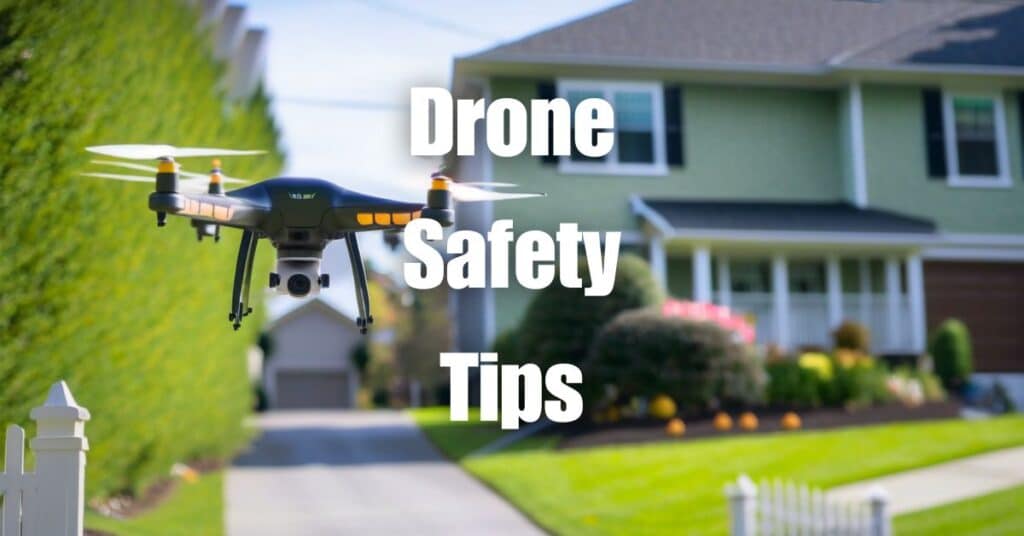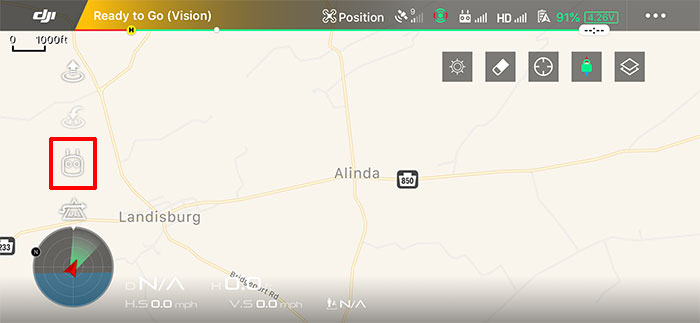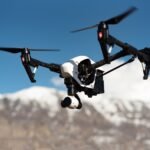Introduction
When it comes to the world of drones, the technological advancements that have been made in recent years are nothing short of impressive. Automatic starting is one of those advancements that not only enhances the user experience but also significantly expands the potential applications of drones across various industries. Whether you’re a seasoned pilot or just starting your journey into the skies, understanding the importance of automatic starting for drones can help you maximize your drone’s capabilities while ensuring a safe and efficient operation.
Importance of Automatic Starting for Drones
Imagine being out in a vast open field, sunlight streaming down, and your drone sitting idly, waiting for you to turn it on manually. While this may be a relaxing scene for some, having the ability to set your drone to start automatically can transform your flying experience. There are several reasons why automatic starting is a game changer in the drone world:
- Ease of Use: For both professional and hobbyist flyer, automatic start features simplify the operation process. You can set your drone to power up and launch without having to toggle switches or push buttons. This is especially useful in scenarios where you’re handling multiple drones at once.
- Time Efficiency: Automatic starting allows you to save precious time, allowing you to focus on other aspects of your flight mission. Instead of spending time prepping and launching, you can plan your aerial photography, inspections, or surveillance tasks in advance.
- Enhanced Safety: With automatic starting, there are built-in mechanisms that help ensure safe operation. These include safety checks that confirm optimal conditions before launch, unlike manual operations where a pilot might accidentally overlook vital checks.
- Consistency and Reliability: Automatic starts offer a level of consistency that can be beneficial, especially for commercial pilots. Be it delivering goods, surveying land, or conducting inspections, you can program the drone to start at a specific time alongside any other functions needed for that task.
- Advanced Features Integration: Many drones with automatic starting features come equipped with the latest technology, such as GPS navigation, obstacle avoidance, and 3D mapping capabilities. This can elevate your flying experience and help you use your drone more effectively.
Personal experience can shed light on the impact of automatic starting. A while ago, I was involved in a project involving aerial surveys of a large construction site. Our team had multiple drones programmed to automatically start at different times during the day. The result? We collected a vast amount of data without any interruptions. It made everything seamless, and I realized how efficient drone operation can be when harnessing the power of technology.
Overview of Setting Up Automatic Starting
Setting up your drone for automatic starting requires some key steps to ensure everything runs smoothly. It’s not just plug-and-play; you will need to adjust settings, connect devices, and verify the drone’s firmware to fully take advantage of this feature. Here’s a brief overview of the process:
- Assess Drone Capabilities: Before diving into settings, ensure your drone supports automatic starting. Review the user manual or check with the manufacturer.
- Install the Latest Firmware: Keeping your drone’s software up-to-date is crucial. Firmware updates can fix bugs and improve features, including automatic start.
- Configure Your Remote Controller: The remote controller plays a significant role in managing the automatic start feature. Connection and setting adjustments will allow you to operate it seamlessly.
- Set Flight Parameters: Fine-tuning the flight parameters can enhance the performance of your automatic start feature. Adjust settings like altitude, speed, and waypoints beforehand to ensure your drone operates as needed.
- Safety Checks and Pre-Flight Inspections: A crucial step that should never be overlooked is conducting safety checks. This can include checking for obstacles in the vicinity, assessing battery life, and ensuring signal quality.
By following these steps, you’ll set a solid foundation for maximizing the usability of your drone. Each section of the setup process introduces different challenges and excitement, and it’s essential to take your time to do them correctly. After all, an automated system is only as good as the checks and balances you put in place. In conclusion, automatic starting for drones is not just a novel convenience; it represents a significant leap in operational efficiency and safety. As drone technology continues to evolve, embracing features like automatic starting can provide a critical edge, whether for personal enjoyment or professional endeavors. Now that you understand the importance of automatic starting and the basics of setting it up, you’re equipped to make your flying experiences more streamlined and effective. Get ready to soar to new heights! 🚀

Safety Precautions
As thrilling as it is to watch your drone take to the skies, safety should always remain a top priority. Having the ability to start your drone automatically can enhance your flying experience, but it also requires careful vigilance to ensure that you’re operating in a safe environment. Safety precautions not only protect you and your equipment but also the people and property around you. By implementing established safety practices, you can help to mitigate potential risks associated with automatic starting and drone operation.
Ensuring Safe Environment for Automatic Starting
Before you even think about launching your drone, it’s essential to assess the environment where you plan to operate. A few minutes of preparation can save you from a lot of hassles later. Here are some key aspects to consider when ensuring a safe environment for automatic starting:
- Location Scouting: Choose an open area that is free from obstacles. Trees, power lines, and buildings can all pose dangers. Ideally, you should have a clear line of sight – this will help you keep track of the drone as it ascends and navigates.
- Weather Conditions: Always check the weather before setting up for an automatic start. Wind speed, rain, and temperature can significantly impact your drone’s performance. Bear in mind:
- Wind Speeds: Most consumer drones can handle mild winds, but anything above 20 mph can become dangerous.
- Rain and Snow: Unless your drone is specifically rated for wet conditions, it’s best to avoid flying in inclement weather.
- Temperature Extremes: Both extreme cold and heat can affect battery life and performance.
- No-Fly Zones: Be aware of restricted airspace. Airports, military bases, and some urban areas may have laws against flying drones. Familiarize yourself with local regulations and ensure you’re operating within legal limits.
- Surrounding Activity: Pay attention to the area around you. Are there people or animals around? Loud noises, crowd gatherings, or active sports may not only distract your drone but also pose a risk to safety.
I recall a day when I was eager to try out some new settings on my drone. I found a picturesque park nearby and rushed out. Curious children and playful dogs quickly surrounded my setup, immediately reminding me of the importance of selecting a suitable environment. I had to relocate to another field—this lesson was critical in emphasizing that people around should be given space when operating drones.
Checking Drone Conditions Before Setup
Once you’ve established a safe flying environment, it’s time to check your drone to ensure it’s in top shape for an automatic start. A thorough pre-flight inspection is crucial; it’s better to invest these few minutes now rather than face consequential issues mid-flight. Here’s a checklist to help you ensure your drone is ready:
- Battery Life:
- Check the battery level and consider bringing a spare. Low battery could lead to an emergency landing.
- Make sure the battery is firmly connected, as a loose connection might result in failure during takeoff.
- Propellers:
- Examine the propellers for any wear and tear. Cracks or chips can impair your drone’s flight and put it at risk of malfunction.
- Ensure they are securely attached and that there are no obstructions.
- Firmware Updates:
- As already mentioned, ensure your drone’s firmware is up-to-date. Manufacturers often release updates to fix bugs and improve features.
- If your drone supports automatic starting, check if any specific updates relate to that feature.
- Camera and Gimbal:
- Ensure that the camera and gimbal are functioning correctly. A malfunctioning camera could lead to poor quality captures or failed missions.
- Cleaning the lenses and checking the connections can be beneficial before launch.
- Control Signals:
- Test your remote controller to confirm there are no signal issues.
- Check the Wi-Fi or other signal connections if your drone operates on those wavelengths.
- Compass Calibration and GPS:
- Calibrate the compass to avoid conflicts in navigation. It’s especially important if you’ve moved your drone from one location to another.
- Make sure GPS signals are strong by doing a test on your positioning.
Remember, performing these checks might feel tedious, but they can significantly impact your drone’s performance and safety. Each step mitigates the risk of technical malfunctions, which is crucial for a successful automatic start. Once, during a trip to a scenic mountain, I neglected some pre-flight checks and faced minor complications. My drone dangerously tilted during ascent due to uncalibrated compass settings. Thankfully, I regained control, but it became a vital reminder that no operation is too small to overlook when it comes to safety. In closing, practicing safety precautions for automatic starting is all about being prepared and vigilant. Your awareness of both the environment and the condition of your drone will contribute greatly to a smooth and enjoyable flying experience. Flying should bring joy—not anxiety or accidents. So take the time to gear up safely, and you’ll be set to enjoy the great adventures that lie ahead! 🌄✈️

Understanding Drone Firmware
As we delve deeper into the complexities of drone operation, one aspect that often doesn’t receive the attention it deserves is firmware. While many drone pilots are keen to talk about flight modes, battery life, and camera specs, understanding drone firmware is crucial for ensuring that your drone operates at peak efficiency, especially with features like automatic starting. Let’s break this down into two important areas: the significance of firmware updates and how to install the latest firmware to utilize functions like automatic start.
Importance of Firmware Updates
Firmware is essentially the software that resides in your drone’s hardware and dictates how it operates. Think of it as the brain of your device; it allows your drone to perform its numerous functions, from flight stabilization to connectivity with your remote controller. Here’s why keeping your firmware updated is essential:
- Performance Improvements: Firmware updates often enhance the overall performance of your drone. This might include better flight stability, improved battery efficiency, and even new features that weren’t available before. For instance, an update could reduce latency or lag that you’ve previously experienced during flight.
- Bug Fixes: Like any technology, drones can have glitches. Manufacturers release firmware updates to address known issues, ensuring that your drone does not exhibit erratic behavior during critical operations. This is especially important for features like automatic starting, as any miscalculations during launch can lead to accidents.
- Enhanced Safety Measures: Many updates focus on safety features. This can include upgraded obstacle avoidance systems, better GPS accuracy, and improved fail-safe protocols. With a drone programmed for automatic start, having the latest safety measures in place can be vital for preventing accidents.
- Compatibility with New Accessories: If you’ve added new components or accessories to your drone, such as upgraded cameras or additional payloads, firmware updates ensure compatibility with these enhancements, allowing your drone to make the most of its equipment.
- Legal and Regulatory Compliance: Regulations regarding drone flights are constantly evolving. Manufacturers may release firmware updates that comply with new laws. Staying updated can help you remain compliant with regulations, further preventing potential legal issues down the line.
Let me share a quick story about my own experience with firmware updates. A while back, I bought a high-end drone that had a stellar reputation for filming. Excitedly, I took it for its first flight without checking for any firmware updates. Halfway through my shoot, it experienced a connection drop right as I hovered over a stunning landscape. After some anxious moments, I regained control, but I learned that had I updated my firmware before takeoff, I might have avoided that scare altogether.
Installing Latest Firmware for Automatic Start
Now that we’ve established the importance of firmware in drone operation, let’s discuss how to install the latest firmware effectively. This process can seem daunting, but with the right steps, you can ensure a smooth upgrade. Here’s a step-by-step guide to get you going:
- Check Current Firmware Version:
- The first step is to check which firmware version your drone is currently running. You can usually find this information in the settings on your drone’s app or remote controller.
- This allows you to differentiate between your current version and the latest available one.
- Update the Drone App:
- Download and install the latest version of the drone’s companion app on your smartphone or tablet. These apps typically facilitate the firmware update process.
- Ensure that your device’s operating system is also up-to-date to avoid compatibility issues.
- Connect Your Drone:
- Power on your drone and connect it to the app via Bluetooth or Wi-Fi, as per your drone model’s connectivity requirements.
- Make sure your drone is in a stable location with good GPS signal before starting the update process.
- Follow App Instructions:
- Navigate to the settings or firmware update section in the app. It should prompt you to update if there is a newer version available.
- Follow the on-screen instructions carefully. Sometimes this includes downloading the update onto your mobile device first.
- Complete the Update:
- Let the update finish completely. Avoid interrupting this process, as interruptions can lead to failed installations which might require you to reset the drone.
- Most upgrades will prompt you or indicate completion.
- Verify Installation:
- After updating, check the firmware version again in the app to confirm that the update was successful.
- Recalibrate your drone if necessary, especially if the update includes changes to flight mechanics or features.
- Test the Automatic Start Feature:
- Once the firmware is confirmed to be up-to-date, conduct a small test flight to make sure all features, including automatic start, are functioning correctly.
- Ensure that you’re in a safe environment and conduct all necessary pre-flight checks prior to launching.
It’s essential not to rush through updates. Not only do they improve your drone’s capabilities, but they can also ensure that advanced features work seamlessly. On one occasion, I attempted to skip the update process to get back into the air quickly. I realized soon after that the new obstacle avoidance feature wasn’t functioning properly, which made for a nerve-wracking experience while filming bustling city streets. In summary, understanding your drone firmware, recognizing the importance of updates, and knowing how to install the latest versions is crucial for optimizing your drone’s performance. Embracing these practices will not only enhance your flying experience but also contribute to safer and more enjoyable flights. Keeping your drone up-to-date is like giving it a fresh set of wings – it opens up a world of possibilities! 🦅✨

Configuring Remote Controller
Having a solid understanding of how to configure your remote controller is essential if you want to take full advantage of features like automatic starting. The remote controller is your primary interface with the drone; it’s how you command your aircraft and handle a multitude of functions. In this section, we’ll guide you through connecting your remote controller to the drone and setting up the auto-start feature to make your flying experience as smooth as possible.
Connecting Remote Controller to Drone
Connecting your remote controller to your drone may seem straightforward, but there are some key steps to ensure a successful and smooth pairing. Follow this guide to get started:
- Charge Your Devices:
- Before you begin, make sure that both the drone and the remote controller are fully charged. Nothing is more frustrating than getting everything set up only to have one of the devices die before takeoff.
- A quick check can save you a lot of time.
- Power On the Drone:
- Turn on your drone first. Most drones have a dedicated power button that requires a long press to activate.
- Ensure that you are on a flat, open surface when powering up.
- Activate the Remote Controller:
- Next, power on the remote controller. Similar to the drone, there’s typically a power button that you’d use to initiate it.
- Some controllers may have unique startup sequences or button combinations, so it’s wise to consult your manual if you aren’t certain.
- Initiate Connection:
- For many modern drones, the remote controller and drone will connect automatically once both are powered on.
- If they don’t connect automatically, look for a button or option labeled “Bind” or “Connect” on the controller. Pressing this may prompt the two devices to pair.
- Check for Connection:
- Once connected, the app associated with your drone (usually installed on your smartphone or tablet) should indicate a good connection status.
- Most drones also provide visual signals, such as LED lights on the drone indicating a successful connection.
- Test Functionality:
- Before heading out for a flight, test the remote controller’s functionality. Move the sticks to check if they are properly communicating with the drone.
- Make sure that you’re familiar with all button controls, including emergency stop features and return-to-home functions.
I remember the first time I connected my remote controller to my drone—it felt like magic! I was excited but also nervous. The connection process didn’t seem to work on the first try, and my heart raced until I discovered the “Bind” button. Once I initiated the connection, the drone’s lights danced in confirmation, elevating my excitement to fly.
Setting Up Auto Start Feature on Remote
Now that your remote controller is connected to the drone, it’s time to set up the auto-start feature. This will allow your drone to take off with minimal manual intervention, making your flights a lot easier and more efficient. Here’s a simple step-by-step process:
- Access the Settings Menu:
- Open the companion app associated with your drone, and navigate to the settings menu for your remote controller.
- Look for sections labeled “Flight Settings” or “Remote Control Options.”
- Locate Auto Start Feature:
- Within the settings, search for the “Auto Start” or “Takeoff Configuration” option. Depending on your drone model, the wording may vary.
- Make sure it’s enabled—if it’s turned off, you won’t be able to utilize the feature.
- Adjust Parameters:
- Some drones allow you to customize the parameters related to the auto-start feature. For example, you may be able to set altitude, flight speed, or predefined waypoints.
- Take your time to adjust these parameters according to your specific flight needs.
- Test the Auto Start:
- With everything configured, it’s time to do a test run. Make sure you’re in a safe environment, free of people and obstacles.
- Power up your drone and remote, then activate the auto start. Observe how the drone behaves and ensure that it takes off smoothly as per your configurations.
- Safety Checks:
- After testing, always conduct safety checks if you want to perform auto start in real-world scenarios. Knowing that your drone is equipped to launch automatically should not replace foundational pre-flight checks.
- Take note of the drone’s surroundings and wind conditions before allowing it to auto-launch.
- Utilize Additional Features:
- Many drones now integrate additional functionalities like follow-me modes or custom route planning. Explore these while remaining aware of how they relate to auto-start.
- Knowing how these features interact will make your flights more engaging and fun!
I had an interesting experience during a test flight of the auto-start feature. I had set the drone to take off automatically and was simultaneously fiddling with the camera settings. The moment I looked up, my drone was gracefully ascending and capturing the gorgeous landscape without requiring my manual input. It opened up opportunities to focus on getting the perfect shot rather than worrying about launching the drone! In summary, configuring your remote controller is a pivotal step in maximizing your drone’s full potential, especially when it comes to using advanced features like automatic starting. Your connection process should be seamless, and properly setting up the auto-start feature will not only simplify your flying experience but will also elevate it to new heights of efficiency. So, roll up your sleeves, get that controller configured, and prepare to delve into thrilling aerial adventures! 🕊️✨

Setting Up Flight Parameters
Now that you’ve configured your remote controller and set up the auto-start feature, it’s time to dive deeper into optimizing your drone’s flight parameters. These settings are crucial for ensuring that your drone behaves as expected during its operations, particularly when it comes to automatic starting. With the right settings in place, your drone can perform beautifully, whether you’re capturing breathtaking footage or conducting industrial inspections. Let’s explore how to adjust flight settings for automatic start and ensure accurate compass and GPS calibration!
Adjusting Flight Settings for Automatic Start
The flight settings are the backbone of how your drone will respond during flight, especially during the crucial moments of takeoff and landing. When you engage the automatic start feature, preset parameters determine how your drone behaves once it’s airborne. Here’s how to effectively adjust these settings:
- Altitude Settings:
- One of the first settings you’ll want to adjust is the default altitude for your automatic launch. Most drones have a preset minimum altitude; however, it’s often useful to customize it based on your flying environment.
- Consider starting at a height that allows your drone to clear obstacles like trees or buildings. A common starting point for open areas is around 10-20 feet for safety.
- Takeoff Speed:
- Some drones allow you to adjust the speed of ascent upon takeoff. While it may be tempting to go for a rapid ascent, remember that controlled takeoff can help you maintain stability and avoid sudden movements that can affect your drone’s stability.
- A gentle ascent is usually best for capturing smooth footage or ensuring sensor readings remain accurate.
- Flight Mode Settings:
- Modern drones come equipped with multiple flight modes—these settings dictate how the drone handles its environment. If you’re utilizing automatic start, ensure you have selected the appropriate flight mode.
- Options often include standard, beginner, or sport modes, and when set for automatic functions, safety modes are also crucial.
- Return-to-Home (RTH) Altitude:
- Set the return-to-home altitude higher than the tallest obstacle in your flying area. This ensures that your drone avoids collisions when it’s trying to return to its launch point automatically.
- Testing this feature in open spaces can show how well the drone navigates back without interference.
- Obstacle Avoidance Configurations:
- If your drone has obstacle sensors, make sure they are activated for flights involving automatic takeoff. Fine-tuning the sensitivity and parameters for how fast the drone reacts to obstacles can help avoid crashes.
- Testing these settings before your actual flight will ensure everything operates smoothly.
I vividly recall my first experience adjusting the flight parameters for my drone. I was capturing scenic views at a local park and accidentally set my takeoff altitude too low. My drone barely cleared the nearby bushes and startled a family picnicking. Lesson learned! Now, before any flight, I meticulously review these settings to ensure safety and smooth operation.
Calibrating Compass and GPS for Accuracy
Calibrating your drone’s compass and GPS is essential for accurate navigation and preventing potential mishaps during flight. An uncalibrated compass can lead to erratic flight behavior, and inaccurate GPS signals can hinder your drone’s ability to return home reliably. Here’s how to ensure your navigation systems are on point:
- Compass Calibration:
- Before each flight, conduct a compass calibration. This process is usually initiated via the drone’s app.
- You’ll be prompted to rotate your drone in various orientations—horizontally and vertically. Following the app’s guidance, complete this step in a clear area away from metal objects or power lines that could cause interference.
- Identifying Magnetic Interference:
- Conduct a pre-flight check for any magnetic interference in your surroundings. Metal structures, vehicles, and even certain types of electronic devices can affect the compass reading. Moving to a different location may be beneficial if you suspect interference.
- GPS Setting Verification:
- Ensure your drone can connect to multiple GPS satellites by checking the GPS status on your app. For reliable navigation, aim for a minimum of six satellites.
- A higher number of satellites can ensure better accuracy, so observe if your drone is pulling in signals effectively before making your drone take off.
- Testing Flight Path Accuracy:
- After calibrating, consider flying your drone on a test path and monitor how accurately it follows pre-defined waypoints. This can help you ascertain whether the GPS is working optimally.
- If you notice drift in your drone’s position, you may need to recalibrate.
- Firmware Updates:
- As mentioned in earlier sections, keeping your firmware updated can also impact the effectiveness of GPS and compass functions. Make sure you have the latest updates that could enhance navigation reliability.
During one of my calibration sessions, I overlooked conducting a compass check and ended up having the drone spin erratically while attempting to hover. It was quite a scare, and I quickly had to land it manually. Since then, it’s become a ritual; I always check compass readings before every flight to ensure I’m good to go! In conclusion, setting up flight parameters is paramount in achieving a successful and safe flying experience with your drone. By carefully adjusting the flight settings for automatic start and calibrating your GPS and compass, you become a more informed pilot ready to effectively utilize all the capabilities that modern drones have to offer. Take these steps seriously, and not only will your flights be more efficient, but they’ll also be a lot more enjoyable! So, gear up and prepare to soar higher than ever before! 🌤️🚁✨



